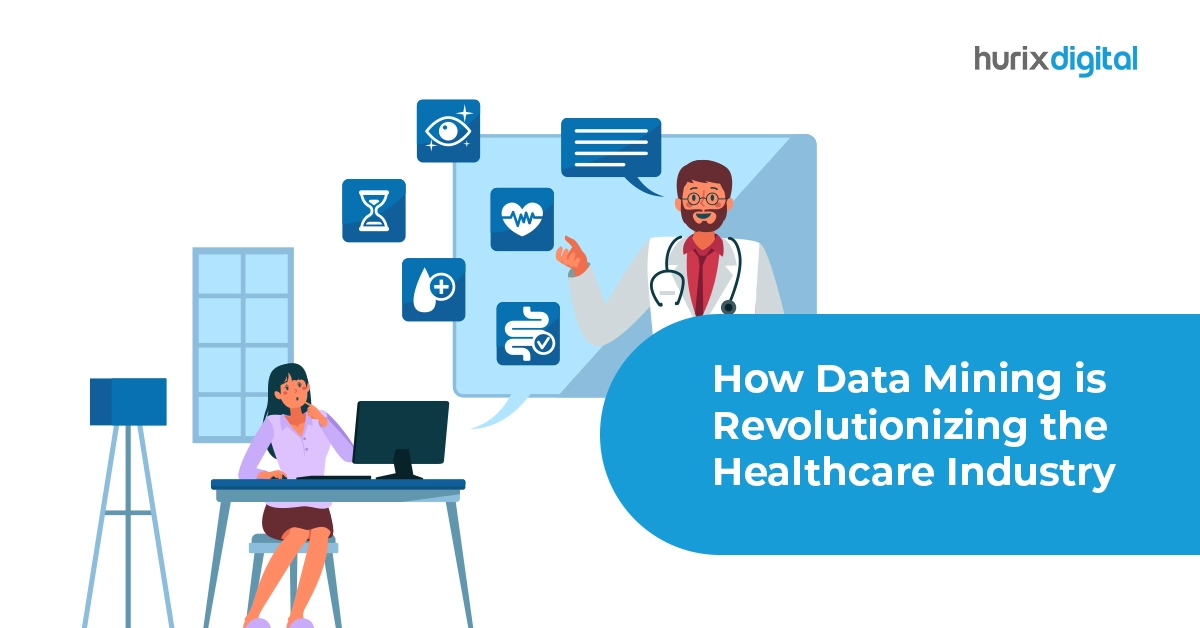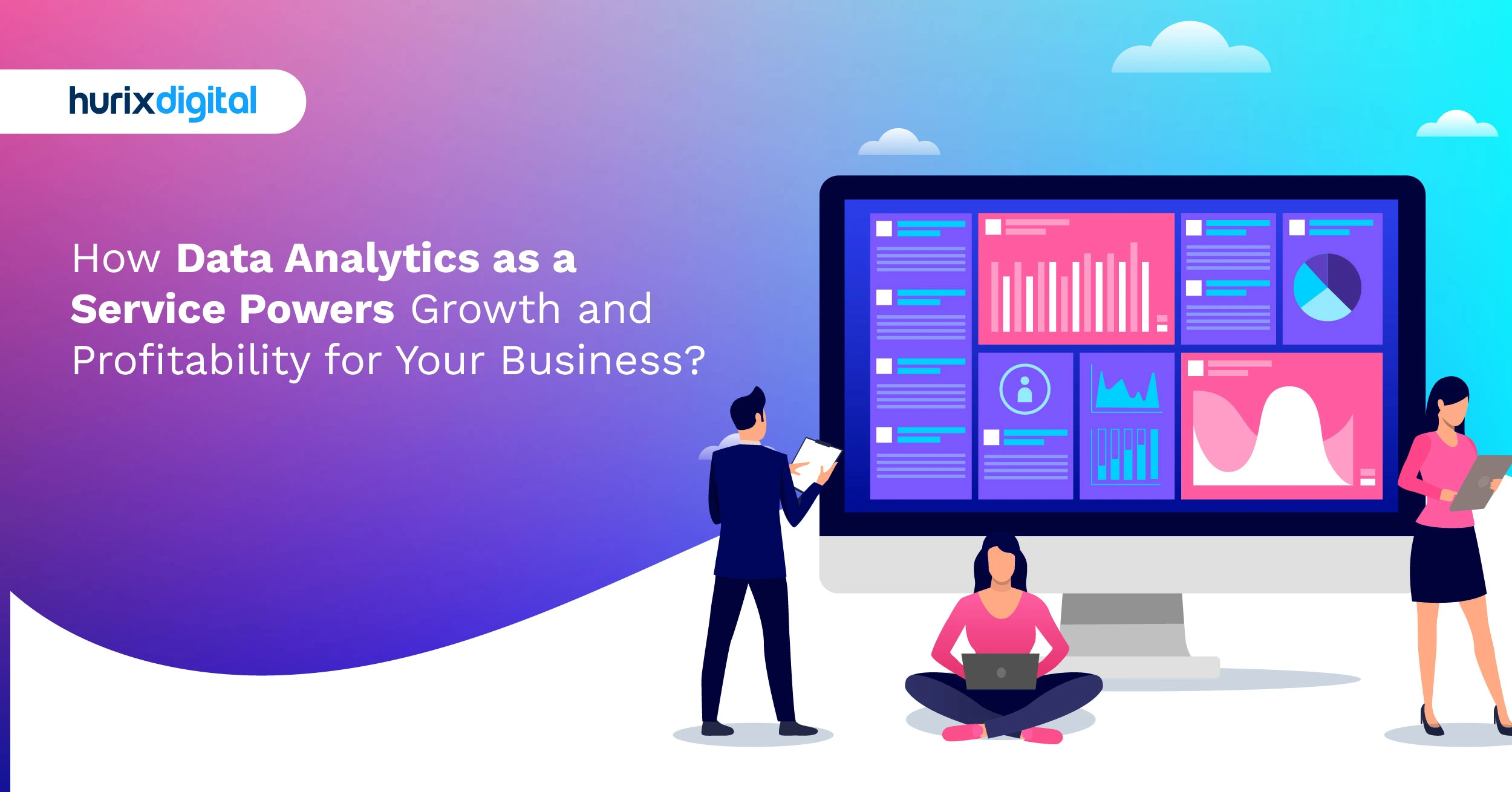
How Data Mining is Revolutionizing the Healthcare Industry?
Summarize with:
Have you ever wondered how much data is generated and collected in the healthcare industry daily? From electronic health records and medical images to lab tests and wearable devices, the healthcare industry is overflowing with data.
But what can we do with all this data? How can we make sense of it and use it to improve the quality and efficiency of healthcare services? This is where data mining comes in.
The technique of obtaining valuable information from huge and complicated databases is known as data mining. It can aid in bettering disease diagnosis, treatment, and prevention through patterns in healthcare, correlations, and data-driven insights.
According to a research paper, data mining can enable more than $300 billion in savings per year in U.S. healthcare. In this blog, we will explore how data mining can help the healthcare industry improve the diagnosis, treatment, and prevention of diseases. Let’s dive right in!
Table of Contents:
- What is Data Mining, and How Does it Work?
- What are the Benefits of Data Mining in Healthcare?
- What are Some Examples of Data Mining in Healthcare?
- Conclusion
What is Data Mining, and How Does it Work?
Finding patterns, trends, and links in huge and complicated datasets by a variety of methods, including machine learning, artificial intelligence, and statistics, is known as data mining. It can assist in question-answering, problem-solving, and evidence-based decision-making.
Data mining typically involves four steps: data collection, data preprocessing, data analysis, and data interpretation.
- Data collection is the process of gathering data from various sources, such as databases, web pages, sensors, or surveys.
- Data preprocessing is the process of cleaning, transforming, and integrating data, and removing any errors, inconsistencies, or missing values.
- Data analysis is applying data mining techniques like classification, clustering, association, regression, and anomaly detection, to extract useful information from data.
- Data interpretation is the process of evaluating and presenting the results of data analysis and providing insights and recommendations.
Also Read: The Rise of Simulation Learning: 5 Innovative Approaches to Healthcare Training
What are the Benefits of Data Mining in Healthcare?
Data mining has many benefits for the healthcare industry, such as:
- Enhanced Clinical Decision-Making: Data mining can help healthcare providers improve the quality and efficiency of their services by providing accurate and timely diagnosis, personalized treatment, and preventive care. It can also support clinical decision support systems (CDSS), which are software tools that can assist clinicians in making evidence-based decisions, such as prescribing drugs, ordering tests, or recommending interventions
- Increased Diagnosis Accuracy: By finding patterns in genomic data, clinical records, and imaging data, data mining can assist healthcare providers in improving the accuracy and reliability of the diagnosis process. Data mining techniques can also detect uncommon or complicated diseases, such as cancer, that might be overlooked or mistaken otherwise.
- Improved Treatment Outcomes: By comparing and contrasting symptoms, causes, and treatment plans, healthcare providers can use data mining procedures to optimize the safety and effectiveness of their treatments and determine the best course of action for a particular illness or condition. Additionally, they can track and assess how medications, surgeries, or therapies affect the quality of life, survival, and recovery of their patients.
- Reduced Healthcare Costs: By improving the use of resources, reducing unnecessary expenses, and increasing productivity, data mining can lower the service costs for healthcare providers. This can help identify and stop fraudulent and abusive practices, such as unsuitable referrals, prescriptions, or claims, and protect the financial interests of both providers and payers.
- Saved Lives: Healthcare providers can use data mining to save lives, by detecting and preventing diseases, identifying risk factors, and improving patient outcomes. This technique can also help improve public health, by aggregating and analyzing data from various sources, such as social media, web searches, or surveys, and finding patterns that can help detect and respond to epidemics, outbreaks, or emergencies.
By using data mining, healthcare providers can enhance their performance, lower their expenses, and protect their patients’ health. But they also have to deal with some issues and dangers, such as the reliability, safety, confidentiality, and morality of the data, which need to be handled with caution and care.
Data mining in healthcare is a developing and hopeful area that demands cooperation and creativity from different parties, such as scientists, programmers, providers, funders, controllers, and users.
What are Some Examples of Data Mining in Healthcare?
Finding patterns, trends, and links in huge and complicated datasets by a variety of methods, including artificial intelligence, machine learning, and statistics, is known as data mining. It can assist us in finding solutions to issues, addressing challenges, and reaching judgments supported by data. Here are a few instances of data visualization in healthcare:
- Cancer Diagnosis and Treatment: Healthcare specialists can use data mining to identify and treat cancer by analyzing genomic data, clinical records, and imaging data, and finding patterns that can help diagnose, classify, and predict the progression of cancer. For example, The Cancer Genome Atlas (TCGA) is a public database that contains data from over 20,000 cancer patients and has been used for data mining to discover new biomarkers, drug targets, and treatment strategies.
- Chronic Disease Management: Data mining can help monitor and manage chronic diseases by collecting and analyzing data from wearable devices, mobile apps, and electronic health records and finding patterns that can help track, prevent, and intervene in chronic conditions. For example, the Medical Information Mart for Intensive Care (MIMIC) is a public database that contains data from over 60,000 intensive care unit patients and has been used for data mining to develop risk scores, decision support systems, and outcome prediction models.
- Public Health Surveillance: It can help improve public health by aggregating and analyzing data from various sources, such as social media, web searches, and surveys, and finding patterns that can help detect and respond to epidemics, outbreaks, and emergencies. For example, Google Flu Trends was a project that used data mining to estimate flu activity based on web search queries and provided near-real-time information to public health officials.
Also Read: Healthcare Access for All: Navigating USA’s Digital Accessibility Standards
Conclusion
Data mining holds tremendous potential to revolutionize the healthcare industry by unlocking valuable insights from vast and complex datasets. By leveraging data mining techniques, healthcare providers can enhance clinical decision-making, increase diagnosis accuracy, improve treatment outcomes, reduce costs, and ultimately save lives.
However, along with these opportunities come challenges related to medical data mining, safety, confidentiality, and ethical considerations. Stakeholders must collaborate and navigate these challenges responsibly to realize the full benefits of data mining in healthcare. As technology continues to advance, the future holds promising opportunities for further innovation and advancements in leveraging data mining to improve healthcare delivery and outcomes.
Want to use the transformative power of data mining in healthcare? Contact Hurix Digital today to embark on your journey towards optimized healthcare delivery and improved patient outcomes.
Summarize with:

Vice President – Content Transformation at HurixDigital, based in Chennai. With nearly 20 years in digital content, he leads large-scale transformation and accessibility initiatives. A frequent presenter (e.g., London Book Fair 2025), Gokulnath drives AI-powered publishing solutions and inclusive content strategies for global clients
 A Space for Thoughtful
A Space for Thoughtful 
